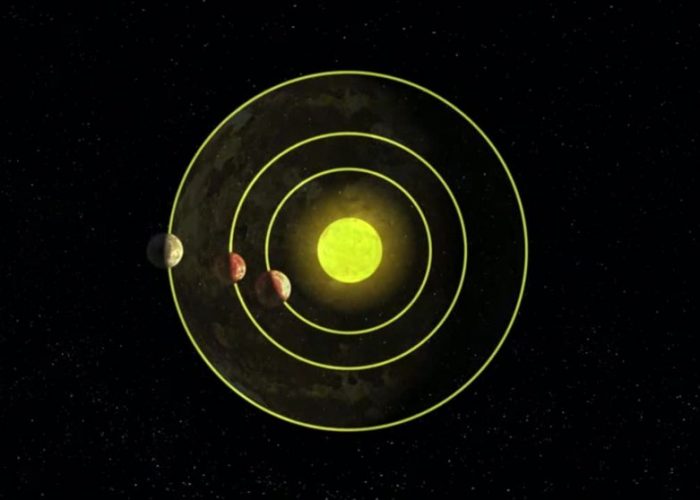



An artificial intelligence algorithm has found another planet orbiting an Earth-like star in a galaxy only 2,545 light years away.
NASA has identified another solar system with as many planets as ours, announcing this week the discovery of an eighth planet circling the Kepler-90 star.
Kepler-90 is similar to our own Sun, and not too far away either – it’s located a mere 2,545 light-years from Earth in the constellation of Draco, the Kepler space observatory found.
Applying a new machine learning algorithm developed by Google to the data that the space telescope collected, a team of astronomers discovered a new planet orbiting that star.
Named Kepler-90i, the new planet is a very hot rocky sphere – about 800F (426C) – that completes an orbit around its star once every 14.4 days, meaning a full year there is the same as two weeks on Earth.
It was detected via tiny dips in the brightness of the star when the planet passed in front of it.
These dips were identified with a new algorithm developed by Google which allows computers to teach themselves how to identify planets by analysing Kepler data.
“The Kepler-90 star system is like a mini version of our solar system. You have small planets inside and big planets outside, but everything is scrunched in much closer,” said Andrew Vanderburg, a NASA Sagan Postdoctoral Fellow and astronomer at the University of Texas at Austin.
“Just as we expected, there are exciting discoveries lurking in our archived Kepler data, waiting for the right tool or technology to unearth them,” said Paul Hertz, director of NASA’s Astrophysics Division in Washington.
“This finding shows that our data will be a treasure trove available to innovative researchers for years to come.”
Christopher J Shallue, a senior software engineer with Google’s research team Google AI, first considered applying a neural network – a particular AI algorithm design which mirrors the way neurons in the brain work – to Kepler data.
He became interested in exoplanet discovery after learning that astronomy, like other branches of science, is rapidly being inundated with data as the technology for data collection from space advances.
“In my spare time, I started googling for ‘finding exoplanets with large data sets’ and found out about the Kepler mission and the huge data set available,” said Mr Shallue.
“Machine learning really shines in situations where there is so much data that humans can’t search it for themselves.”
Unfortunately – at least if you’re hopeful that humanity will discover alien life – other planetary systems probably hold more promise than Kepler-90, according to NASA.
The new planet is roughly 30% larger than Earth and is so close to its star that it is expected to be as hot as our own planet Mercury.
Meanwhile that solar system’s outermost orbiting planet, Kepler-90h, orbits at a similar distance to its star as Earth is to the Sun.
Kepler has produced an unprecedented data set for exoplanet hunting. After gazing at one patch of space for four years, the spacecraft now is operating on an extended mission and switches its field of view every 80 days. – skynews.co.uk